Bat Homes
So where do bats live? Well, we already know that bats don't live in nests, they live in roosts! Most bat species live in trees, caves, abandoned buildings, mineshafts, underneath bridges, rock crevices and sometimes even in human homes!
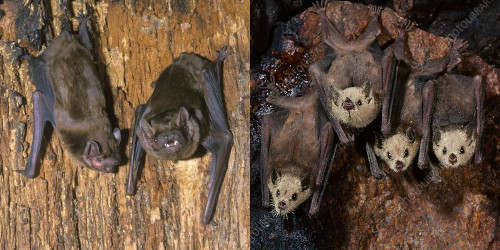

Welcome to my page about the most wonderful and most wildly misunderstood creatures of the night:

I've loved bats since I was a kid, and would love sitting around the bonfire and watching them streak across the night sky between the treetops out at my family's cabin. So I felt like creating a page dedicated to them, to help spread awareness, and inform you about these amazing creatures!
Before we get to the good stuff, for the sake of our furry friends and to do them justice, I must right the wrongs that have befallen all of bat kind! You, and others like you, may have some preceonceptions about bats that you've heard from other people, or from movies or television depicting bats and other such sources.
Here is a short list of the most common misconceptions about bats:
This misconception could not be further from the truth! Just like your own pet cat or dog, bats have their own grooming rituals that they follow every day to keep themselves clean. They are able to groom and lick themselves, sometimes almost to an obsessive degree! They have been known to spend many hours per day cleaning themselves. Infact, some species even clean eachother as well! Bats are in-fact extremely clean creatures.
This misconception likely stems from the three (3) real-world bat species that are classified as 'Vampire Bats'. While it is in-fact true that this set of three species does actually suck blood, they very rarely feed on humans. They are much more likely to feed on other mammals like cattle or birds. These species of bat are only found in Central and South America, so to say all bats feed on blood is incorrect! The vast majority of Bats around the world feed on insects, fruit and plants.
This is a common misconception that likely stems from the way bats roost. Bats usually hang upside down off of branches in trees, and crevices or other footholds in caves. When a bat is about to take flight, they let go of the surface they were roosted on and drop down towards the ground before unfurling their wings to take flight. People have likely misinterpreted this action as the bats wanting to attack your hair, and in doing so would get stuck! It's also likely people think they consider human hair a good place to nest, which is also untrue! Bats do not actually make nests, they roost in trees, caves, abandoned buldings and other dark, warm places.
This misconception likely comes from the way bats handle diseases. While it is true that bats do carry a number of diseases, some even deadly to humans, rabies is only found in around 5-6% of all tested bats on the planet! It is important to remember not to mishandle bats but it is also important to know that rabies only makes up a very small percentage of the kinds of diseases a bat can carry. If you notice you have a bite mark and have been around bats recently, or work up to find a bat in your home, get checked by a doctor immediately!
This misconception has been spread throughout the world from long ago, and has persisted in those that believe in the stories and folklore of their ancestors. Bats were seen as carrying negative energies, and sometimes considered an animal embodiment of evil! In reality, bats are neither good nor evil, they are animals that are living alongside us on this planet. They are born, grow and die alongside us. Bats have a natural place in this world and do not harbour any ill-will or intentions towards us! Bats are more afraid of us than we are of them, so there is no reason to percieve any ill-will or intent to harm from them outside of misplaced fear! Other than old stories of bats being evil, there are also stories of bats being good omens and a sign of great luck!
Now that we have gotten the facts straight, let's get into some real bat information!
So where do bats live? Well, we already know that bats don't live in nests, they live in roosts! Most bat species live in trees, caves, abandoned buildings, mineshafts, underneath bridges, rock crevices and sometimes even in human homes!

When talking about the eating habits of bats, it's good to know that different types of bats eat different types of food! The common types of food for bats include insects, nectar, pollen, fruits and some small vertebrates. Surprisingly, bats eat a lot more food than most people would expect! Due to their small size, and very fast metabolisms, bats need to eat enough food to make up the vast quantity of energy they expend. A lot of this energy is expended during flight. When foraging for food, it has been known that some bats can travel a very far distance in order to obtain it! Some bats have travelled as far as 38KM!
Besides food, bats also need to drink water like we do. Most of the water a bat needs comes from the food they eat, but they also can drink from streams or other fresh water sources, mainly by swooping down and dipping their tongue in water.
For insect eating bats, the main types that they consume include flies, mosquitoes, beetles, moths, grasshoppers, crickets, termites, bees, wasps and mayflies. For flying insects, bats are able to catch them in mid-air due to their echolocation and high agility, usually catching them with their tail and lobbing them into their mouth from their wing. Slower bats usually eat their insects from plants or other vegetation.
For fruit eating bats, as long as the fruit is ripe then they will have no problems eating it! When bats find fruit to eat, they take it back to their roost to feed on it. Because of this, bats contribute heavily to the spread and distribution of fruit seeds! Without bats, a lot of fruits would likely go extinct.
For nectar eating bats, they have special physiology that allows them to eat the nectar and pollen of plants quite easily. They have long, bristly tongues that are able to reach deep into the plants to gain access to their food. When retracted, these tongues coil up inside their ribcage! One disadvantage of this however, is when nectar and pollen are scarce, these bats are unable to eat other types of food. These species are more likely to become extinct because of this!
For bats that feed on small vertibrates, their main food sources include fish, frogs, lizards, birds and mammals. A lot of the above-ground animals are tracked via their mating calls, making them quite easy to locate for bats. Vampire bats are included in this group, and mainly feed on animals like cattle or birds. They feed on the blood when the animals are asleep usually, and have special heat-sensitive organs that allow them to find and feed from them. They also have anti-coagulant properties in their saliva!
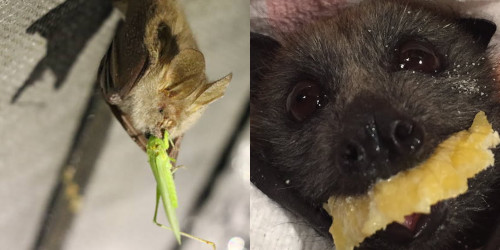
There are over 1400 different kinds of bats, making them the second largest order of mammals on the planet. That
equates to about 20% of all mammals on Earth!
Here is a short list of a few noteworthy bat species:
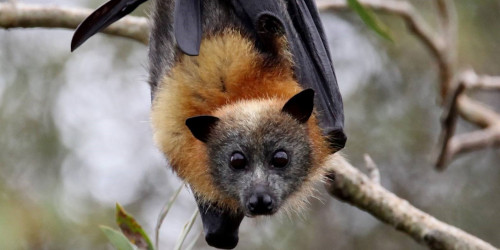
Flying Foxes are part of a family of bats called 'Megabats', and they are called that for a good reason! Flying Foxes are the largest bats in the world! Their wingspan can reach up to over a metre in length! They mostly live in South Asia, Southeast Asia, East Africa and Austrailia.
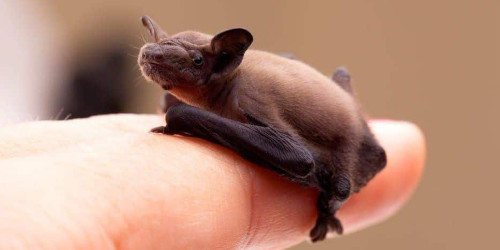
Also known as the 'Kitt's hog-nosed bat', this bat is on the opposite end of the bat size spectrum from the Flying Fox being the smallest bat on Earth! Their size ranges from 29-34 milimetres in length (about the size of a watch face!) They mainly live in Thailand and Mayanmar.
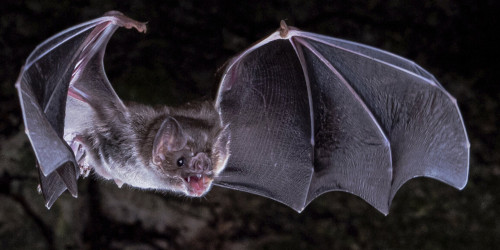
Probably the most famous and misunderstood species is the vampire bat. They feed on mammals, mainly cattle and birds, and drink their blood in very small amounts while the animal sleeps. They are mainly found in Central and South America.
This is the roost camera hosted by batworld.org! click here to see all of their webcams!
"Bats in a Cave" from Quicksounds.com
